Conway Scenic Railroad | White Mountains Fun
Tucked into the White Mountains, the Conway Scenic Railroad offers a delightful old-fashioned railroading experience.
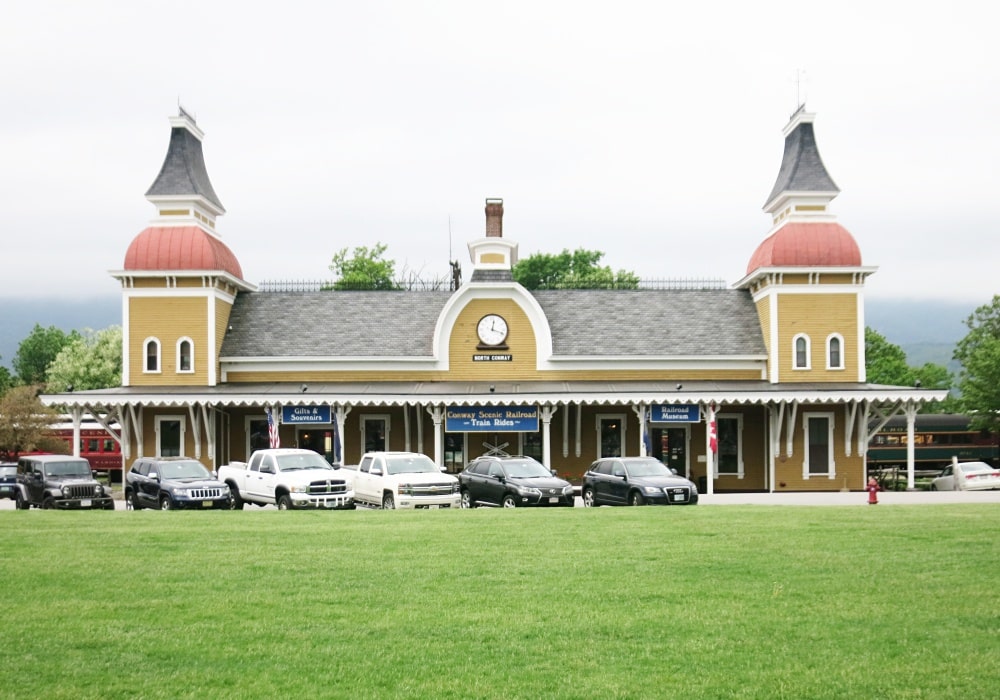
Coffee By Design | Portland, Maine
Photo Credit : Katherine KeenanA few years ago I enjoyed a White Mountains weekend with my family, and our visit included a ride at one of the area’s most recognizable spots — the Conway Scenic Railroad. Located smack in the middle of the White Mountains tourist town of North Conway, in North Conway Village, the station sits like something plucked from a children’s book. Even on an overcast late May day, it stood out in vibrant color.
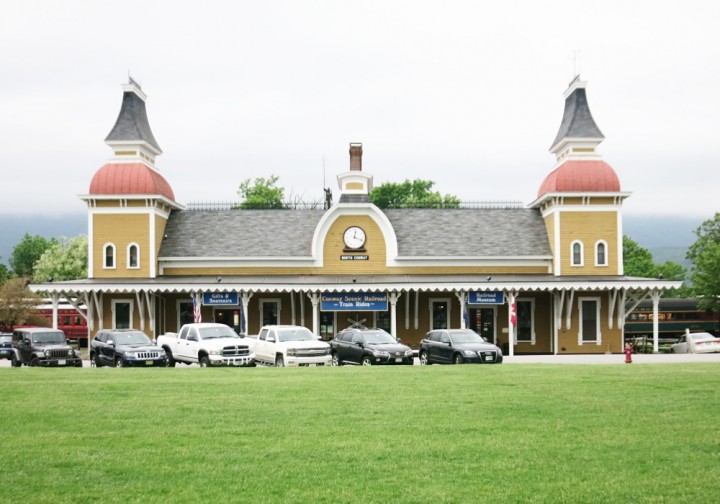
Photo Credit : Aimee Seavey
The depot, built in 1874, was designed by Nathaniel J. Bradlee in an eclectic “Russian Victorian” style. It was added to the National Register of Historic Places in 1979, just five years after the railroad switched over to a fully-tourist operation.
They offer a variety of main railroading adventures, mostly diesel electric-powered. Two family-friendly “Valley” routes head north to either Conway (11 miles) or Bartlett (21 miles), while another, longer “Notch” route heads to the mountains and Crawford Notch. The latter is the for those wanting the “real deal” mountain train experience, and it’s magnificent in the fall, when the autumn colors are blazing. Throughout the year, special events like the ultra-popular “Journey to the North Pole” during the holiday season bring in even more crowds.
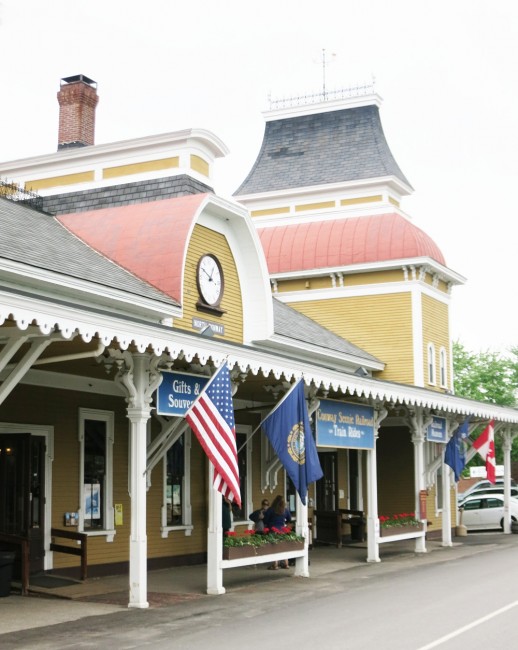
Photo Credit : Aimee Seavey
Directly behind the depot, the tracks (and adventure, perhaps?) await.
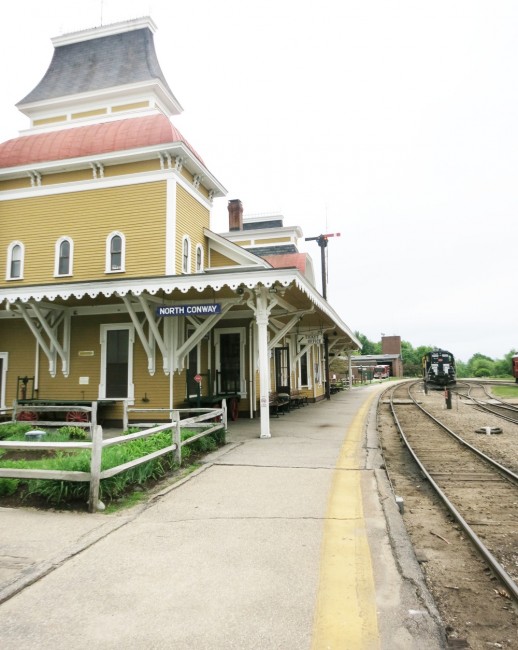
Photo Credit : Aimee Seavey
I made my way through the door marked “Ticket Office” and into the lobby…
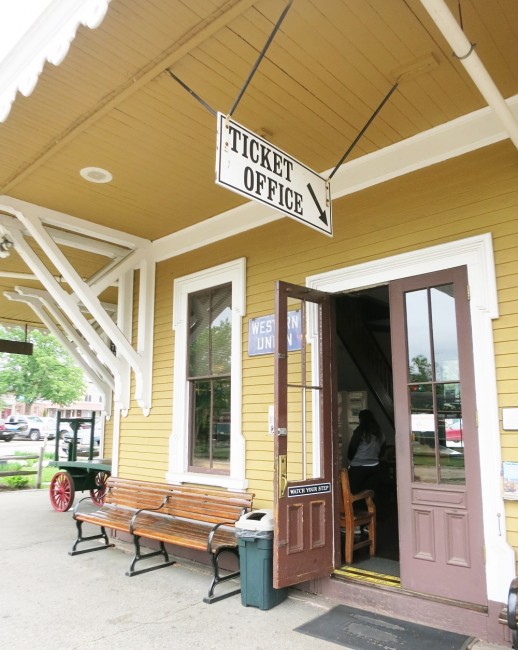
Photo Credit : Aimee Seavey
…where I was met with the quintessential 19th century train depot. Inside, the lobby is comfortably cluttered with train ephemera, objects from railroading days gone by, and (yes) a ticket window. My thanks to friendly Scenic Railroad staff member Dick for helping me get my ticket sorted! And to the Brass Whistle Gift Shop for helping me pick up copies of “The Little Engine that Could” for my niece and nephews.
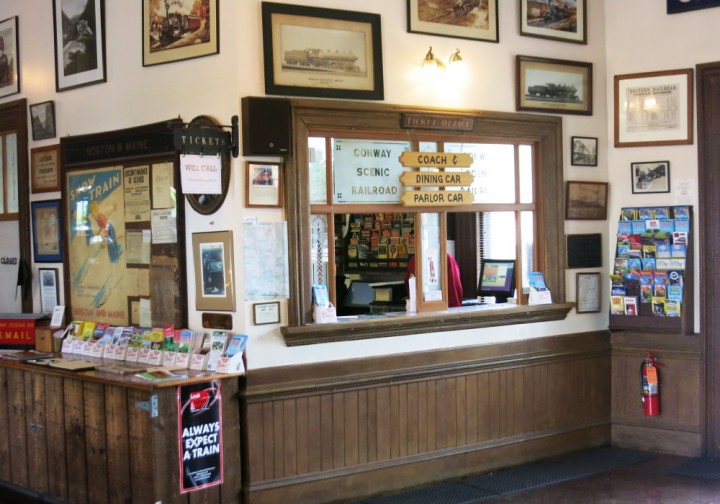
Photo Credit : Aimee Seavey

Photo Credit : Aimee Seavey
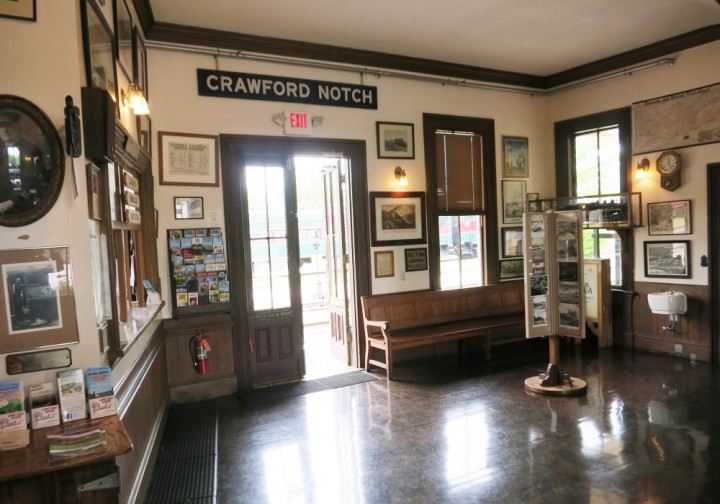
Photo Credit : Aimee Seavey
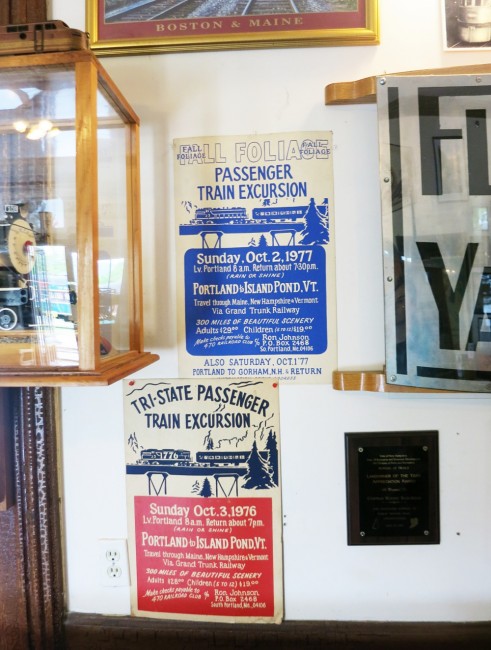
Photo Credit : Aimee Seavey
With time to spare before our ride, I wandered over to the adjacent train yard to check out some of the colorful (retired?) cars at rest.

Photo Credit : Aimee Seavey
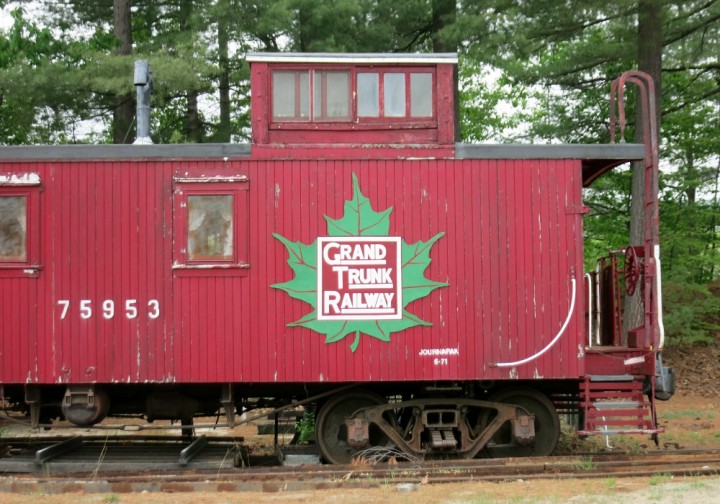
Photo Credit : Aimee Seavey
Then it was back to the depot to wait.
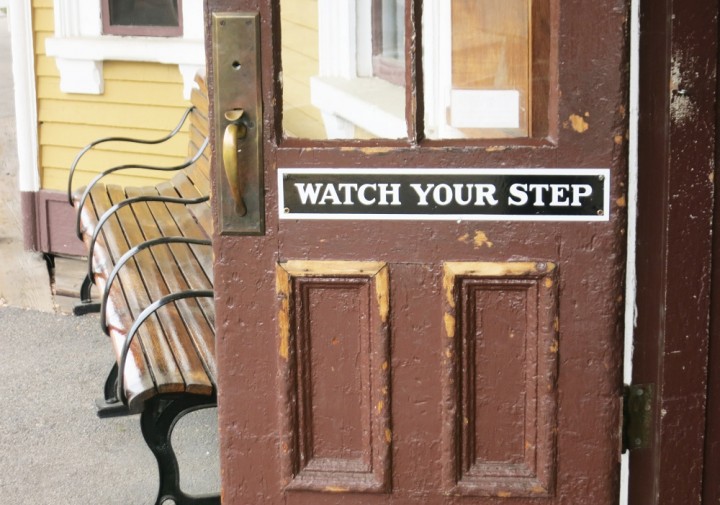
Photo Credit : Aimee Seavey
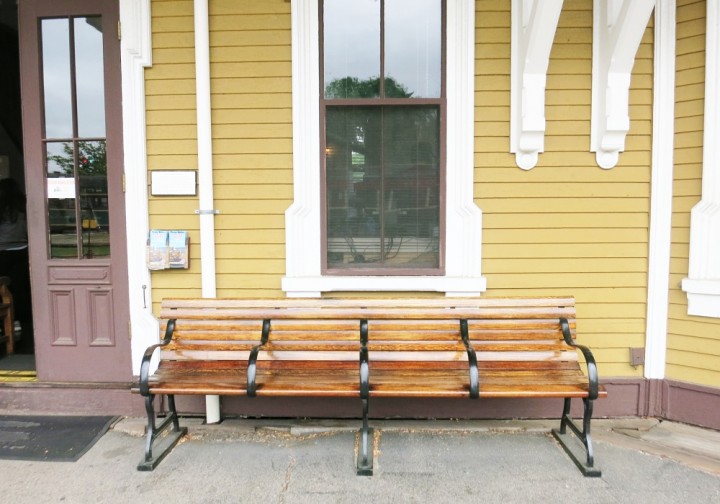
Photo Credit : Aimee Seavey
And a short while later, it was time to climb aboard!
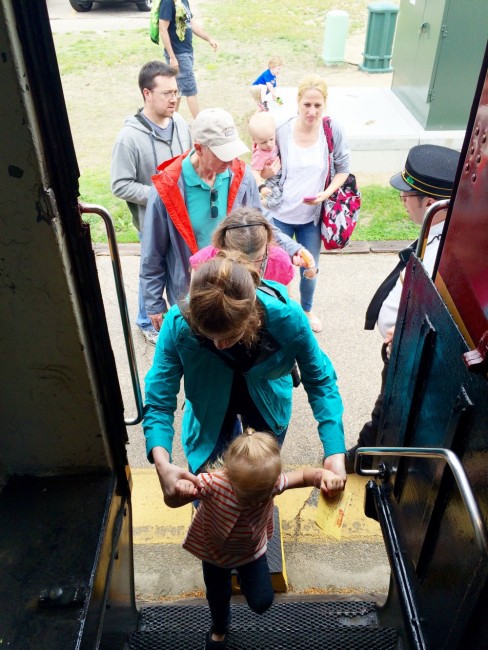
Photo Credit : Aimee Seavey
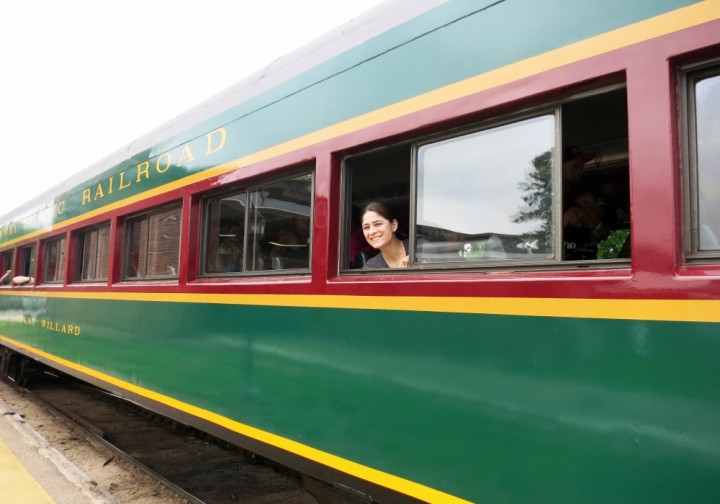
Photo Credit : Aimee Seavey
Mindful of the fact that we had a pair of two-year-olds and a one-year-old in our group, we took the shortest ride — the one hour Valley train south to Conway. It was just long enough for the kids to enjoy themselves without getting restless, and the views were a combination of rural and suburban.
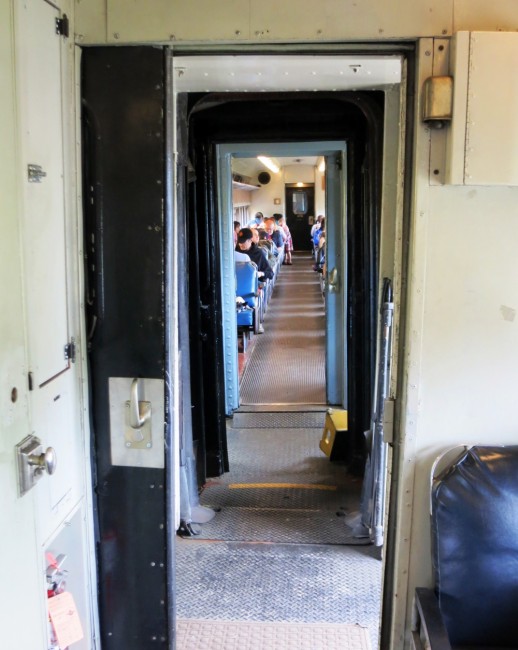
Photo Credit : Aimee Seavey
After passing the golf course of the North Conway Country Club, we passed through some fields (one with cows), alongside a school, and over a bridge that spanned a small river, before pausing for a moment and then repeating the journey back to the station. Despite the short length of the journey, the conductor generated many hearty train whistles, and the kids loved it. It also sounded like there may have been some guided audio narration, but if the speakers were turned on in our car, they weren’t loud enough to make out any of what was being said.
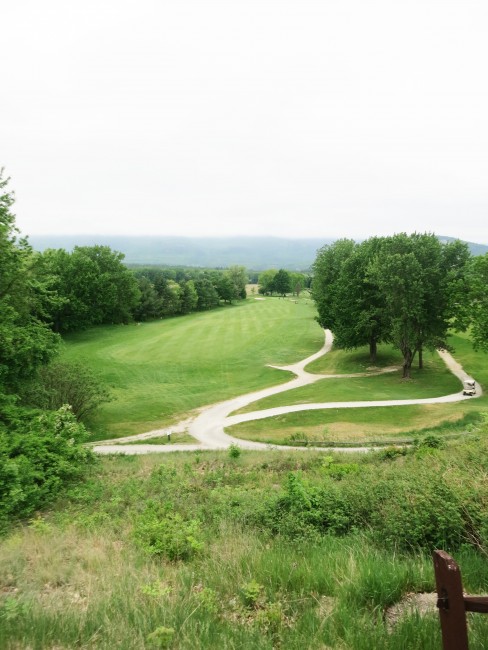
Photo Credit : Aimee Seavey
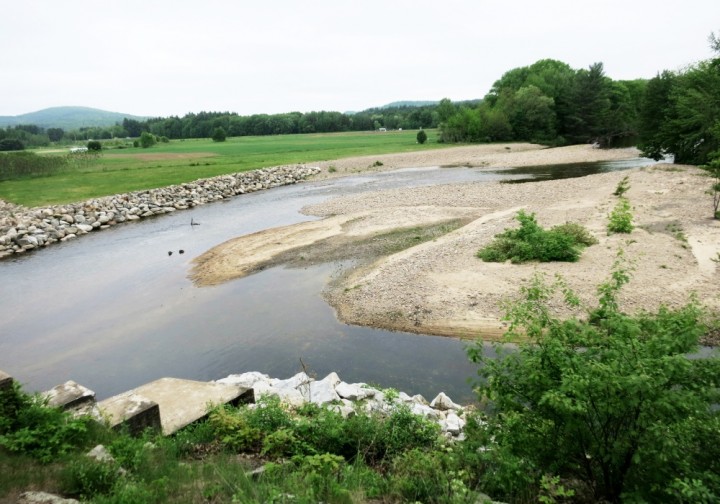
Photo Credit : Aimee Seavey
“Our goal is to preserve a piece of New Hampshire’s railroading history for all to enjoy for generations to come” they say at the Conway Scenic Railroad. I’d say they’re not only doing that, but guaranteeing a memorable and old-fashioned adventure for all who climb aboard.

Photo Credit : Aimee Seavey
Have you ever ridden the Conway Scenic Railroad? Share your memories in the comments!
Conway Scenic Railroad. 38 Norcross Circle, North Conway. 603-356-5251; conwayscenic.com.
This post was first published in 2016 and has been updated.






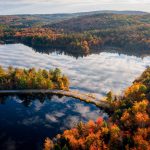
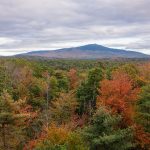
I enjoy the pictures of New England.
I so enjoyed seeing memories of New England being in New Hampshire, Vermont and Maine while living in Massachusetts. I had many wonderful trips both in the summer and skiing in the winter. My husband and I skied almost every weekend for years while belonging to a ski club in Bartlet. I regret I never took the scenic train ride but I did ride the Cog Railroad up Mt. Washington which was a thrill. I am now a “transplant” to Michigan but thank you for all the past memories which I will always remember.
I’m a North Conway native (transplanted to western MA) and I loved your story and pictures of our beloved Conway Scenic Railroad! My brother works there most summers so I had the fun a couple of years ago of riding the Notch train on which he was the conductor and my cousin the narrator. Good times!
I am from Switzerland, I love so much Conway, I had a wonderful trip with my husband and a lot of memories in this beautiful country ! Thank you
Re “…Two family-friendly “Valley” routes head north to either Conway (11 miles) or Bartlett (21 miles)”
Pleased to see this first erroneous “north” location of Conway corrected further down in the text to it being “south” of North Conway…
So cool to see memories of my Sargent families who loved and lived in the Conways.Thete is even a momento item of a paycheck inside the station for one of our great uncles. How they loved growing up in such a special area of rural life.
My husband and I took the luncheon trip to Crawford Notch
In July, 2019. The experience was fantastic! Beautiful scenery, friendly and knowledgeable RR employees. The delicious lunch went far beyond our expectations in taste, presentation, ambience. Highly recommend this trip.
My husband and I spent our 43rd Wedding Anniversary in Conway, NH and took a trip on the North Conway Railroad to Crawford Notch. We were all required to wear masks, and seating was alternating rows (this was July, 2020) and we all had a GREAT time!!! Scenery was amazing, the narration fascinating and everything was much, much fun!!!